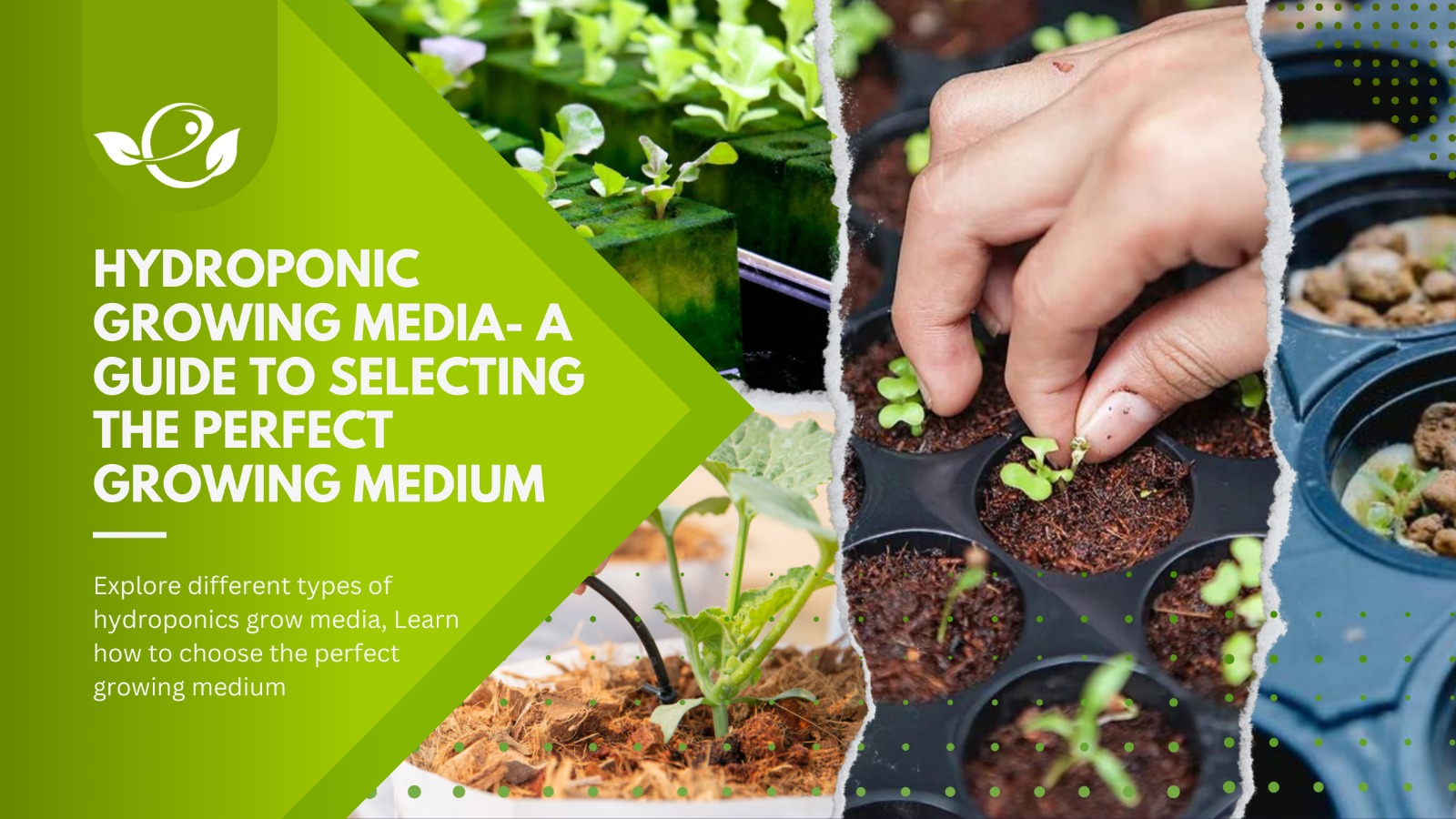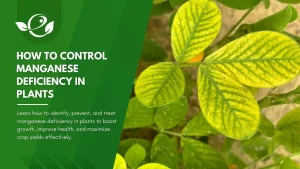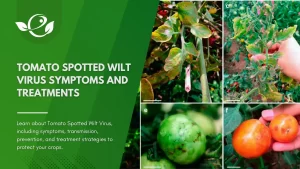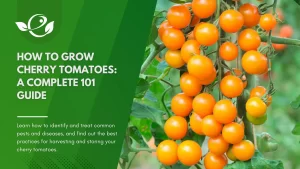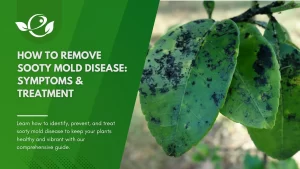Table of Contents
Selecting the right growing medium is crucial for the success of your hydroponic system. A growing medium serves as a support system for plant roots and plays a vital role in maintaining a proper water-to-oxygen ratio. With a wide range of hydroponic growing media available, it’s essential to make an informed decision. In this comprehensive guide, we will explore various types of growing media, their characteristics, benefits, and downsides, to help you choose the most suitable medium for your hydroponic setup.
Understanding Hydroponic Growing Media
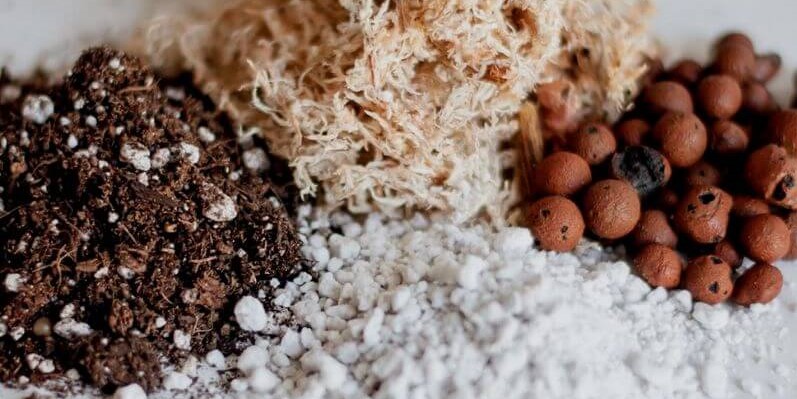
Hydroponic growing media are materials used to support plant roots and hold the nutrient solution. They provide stability, moisture, access to oxygen, and maximum nutrient exposure for plants. An ideal hydroponic growing medium should have the following characteristics:
- Supportive Structure: The medium should provide adequate support for plant roots to anchor themselves.
- Moisture Retention: It should be capable of retaining moisture to ensure consistent hydration for the plants.
- Aeration: The medium should allow sufficient airflow to promote healthy root development.
- Nutrient-Holding Capacity: It should have the ability to hold and release nutrients effectively.
- pH Neutrality: The medium should maintain a stable pH balance in the Nutrient Solution.
Types of Hydroponic Growing Media
Choosing the right type of hydroponic growing media is essential to provide the optimal environment for your plants. Let’s explore each type in detail, along with their characteristics, benefits, and downsides:
1. Coco Coir
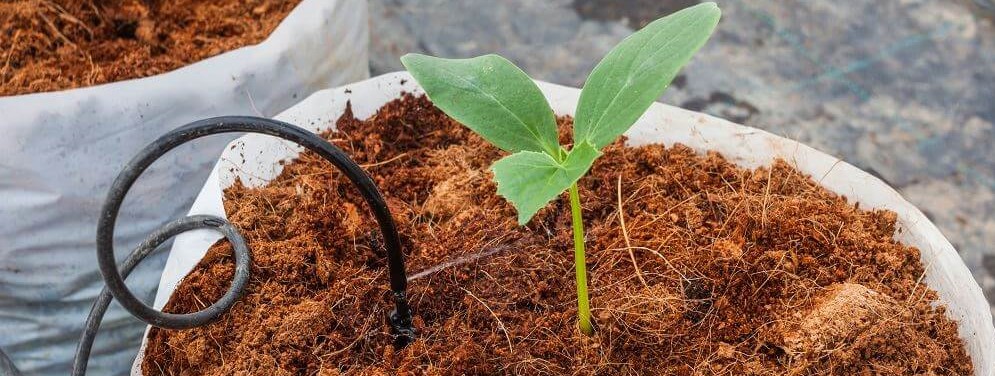
What is Coco Coir?
Coco coir is a popular growing medium derived from coconut husks. It has excellent water retention capabilities, allowing it to retain moisture while providing proper aeration for the roots. Coco coir also has good nutrient-holding properties, ensuring that plants receive a steady supply of nutrients. It is pH-neutral, which means it won’t significantly impact the pH balance of the nutrient solution. Additionally, coco coir is a renewable and sustainable medium. However, it is important to note that it may require buffering before use to adjust its pH level.
Benefits of Coco Coir:
- Organic and Compactable (you can buy compressed, expand at home…saves money on shipping)
- Excellent water retention capacity.
- Provides proper aeration for roots.
- Good nutrient-holding properties.
- pH-neutral.
- Renewable and sustainable.
Downsides of Coco Coir:
- Requires buffering to adjust pH before use.
- Retains a lot of water and may cause root rot.
2. Expanded Clay Pellets
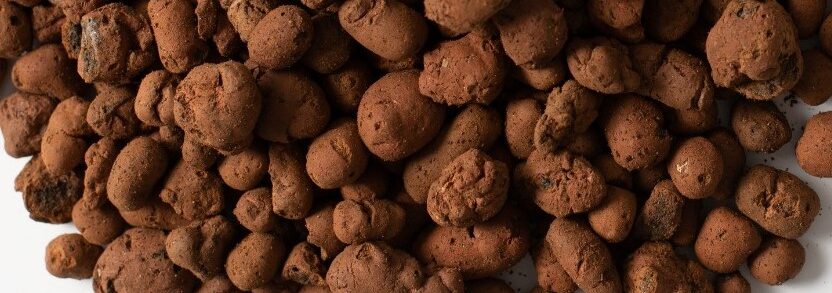
What is Clay Pellets or Hydroton?
Expanded clay pellets, also known as hydroton or clay pebbles, are lightweight and provide excellent drainage. They are made by heating clay in a kiln, resulting in expanded, porous pellets. Their porous structure allows for good oxygenation of the roots while allowing excess water to drain away, preventing waterlogged conditions. Expanded clay pellets are pH-neutral and provide stability for plants. They are reusable, making them a cost-effective option in the long run. However, they may be prone to accumulating debris and require occasional cleaning.
Benefits of Clay Pellets:
- Lightweight and provides excellent drainage.
- pH-neutral.
- Reusable and cost-effective.
- Provides stability for plants.
Downsides of Clay Pellets:
- Accumulates debris and may require occasional cleaning.
- Drain and dry very fast, roots may dry out.
3. Rockwool
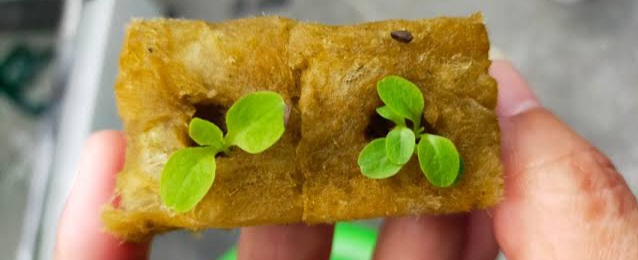
What is Rockwool?
Rockwool is a growing medium made from volcanic rock fibers. It has good water retention capabilities and provides adequate aeration for the roots. Rockwool provides a stable environment for root growth and nutrient absorption. It is available in various forms, such as cubes, slabs, and loose fibers, making it versatile for different hydroponic systems. However, it’s important to handle rockwool with care, as the fibers can be irritating to the skin and respiratory system. Pre-soaking and pH balancing are necessary before using rockwool to remove excess alkalinity.
Benefits of Rockwool:
- Good water retention capacity.
- Provides adequate aeration for roots.
- Versatile for different hydroponic systems.
- Stable environment for root growth and nutrient absorption.
Downsides of Rockwool:
- Fibers can be irritating to the skin and respiratory system.
- Requires pre-soaking and pH balancing before use.
4. Perlite
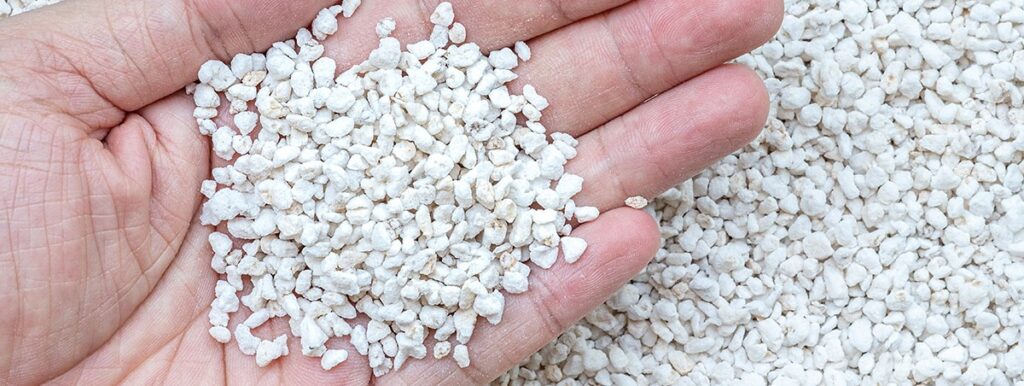
What is Perlite?
Perlite is a lightweight, porous medium made from volcanic glass. It offers excellent drainage properties and promotes aeration of the root zone. Perlite is often mixed with other growing media to improve drainage and increase aeration. It retains some moisture while allowing excess water to drain away. Perlite is inert and pH-neutral, making it suitable for a wide range of plants. However, it is important to note that perlite does not have significant nutrient-holding capabilities and may require frequent nutrient supplementation.
Benefits of Perlite:
- Lightweight and porous.
- Excellent drainage properties.
- Promotes aeration of the root zone.
- Inert and pH-neutral.
Downsides of Perlite:
- Does not have significant nutrient-holding capacity.
- May require frequent nutrient supplementation.
- Potential particle inhalation danger.
5. Oasis Cubes
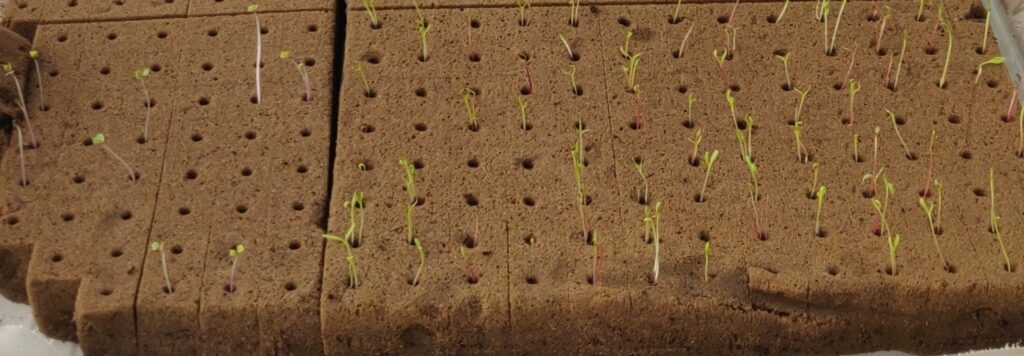
What are Oasis cubes?
Oasis cubes, also known as oasis foam, are primarily used for seed germination and transplanting. They are made from a phenolic foam material that retains moisture well. Oasis cubes provide a stable and moist environment for seeds to germinate and roots to establish. However, overwatering can lead to root rot, so it’s crucial to maintain proper moisture levels. Oasis cubes are not recommended for long-term use, but they are a convenient option for starting seeds or rooting cuttings.
Benefits of Oasis cubes:
- Suitable for seed germination and transplanting.
- Provides a stable and moist environment.
- Convenient for starting seeds or rooting cuttings.
- Inexpensive.
- No pre-soaking is required.
Downsides of Oasis cubes:
- Overwatering can lead to root rot.
- Not recommended for long-term use.
- Not organic and not sustainable.
6. Rice Hulls
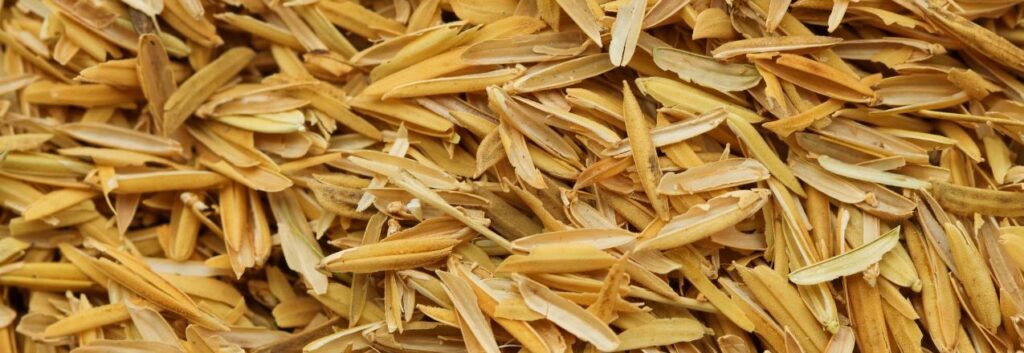
What is Rice hulls?
Rice hulls are organic and sustainable growing media that provide aeration and drainage for the roots. They are lightweight and can be used as an alternative to perlite or vermiculite. Rice hulls do not retain much moisture, making them suitable for plants that prefer drier conditions. They also help to improve soil structure in the long term and contribute to sustainable gardening practices.
Benefits of Rice hulls:
- Organic and sustainable.
- Provides aeration and drainage.
- Lightweight alternative to perlite or vermiculite.
Downsides of Rice hulls:
- Does not retain much moisture.
- Degrades over time.
7. Vermiculite

What is Vermiculite?
Vermiculite is a mineral-based medium that retains moisture while promoting root growth. It has good water-holding capacity and provides aeration for the roots. Vermiculite is often used in seed-starting mixes to improve moisture retention and enhance germination. However, over time, vermiculite can compact and reduce aeration, so it may require mixing with other media to maintain optimal conditions.
Benefits of Vermiculite:
- Retains moisture and promotes root growth.
- Improves moisture retention and germination in seed-starting mixes.
Downsides of Vermiculite:
- Can compact over time, reducing aeration.
8. Growstones
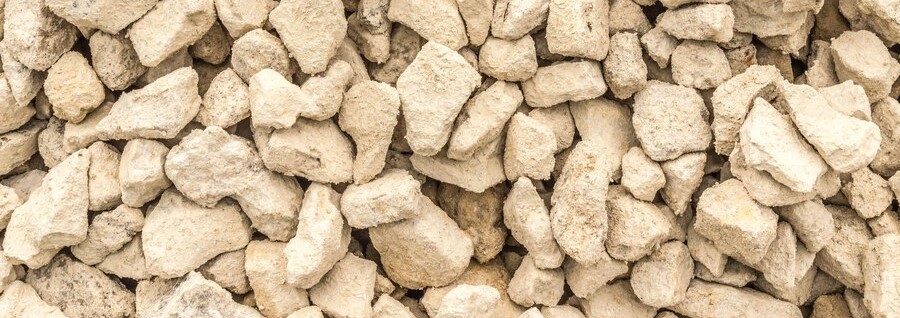
What is Growstones?
Growstones are lightweight, pH-neutral, and sustainable growing media made from recycled glass. They have good water retention properties and provide ample aeration for the roots. Growstones are porous, allowing for proper oxygenation, and have a high water-holding capacity. They are reusable and environmentally friendly. Their lightweight nature makes them easy to handle, and they can be an excellent alternative to traditional media like clay pellets.
Benefits of Growstones:
- Lightweight and pH-neutral.
- Good water retention and aeration properties.
- Reusable and environmentally friendly.
Downsides of Growstones:
- Hart to clean.
9. Pumice

What is Pumice?
Pumice is a lightweight and porous volcanic rock that provides excellent drainage and aeration. It retains some moisture while allowing excess water to drain away, preventing waterlogging. Pumice is suitable for plants that require good root aeration and prefer drier conditions. It is reusable and helps maintain optimal oxygen levels around the roots.
Benefits of Pumice:
- Lightweight and porous.
- Excellent drainage and aeration.
- Retains some moisture.
Downsides of Pumice:
- None notable.
10. Sand and Gravel
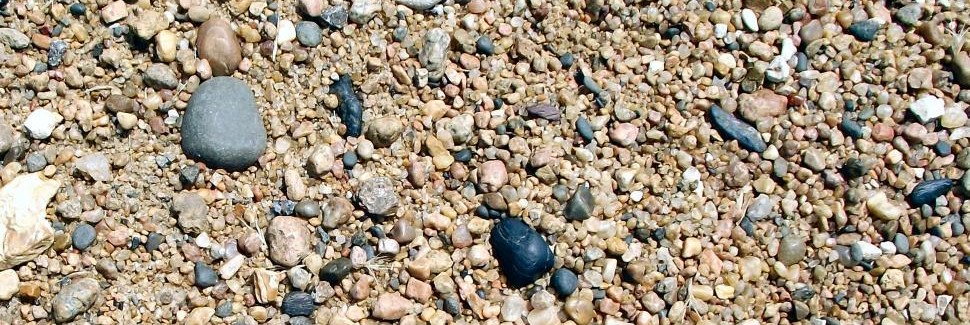
What are Sand and Gravel?
Sand and gravel are common, inexpensive options for hydroponic growing media. They provide good drainage, but their water retention capabilities may not be sufficient for all plant types. Sand and gravel are often used in larger systems or for specific plants that thrive in well-drained conditions.
Benefits of Sand:
- Common and inexpensive options.
- Good drainage properties.
Downsides of Sand:
- May lack adequate water retention for some plants.
- Heavy.
11. Wood Fiber

What is Wood Fiber ?
Wood fiber offers aeration and moisture retention, making it suitable for larger hydroponic systems. It provides stability and promotes healthy root development. Some research has shown that wood chips reduce the effect of plant growth regulators, resulting in larger plant growth.
Benefits of Wood Fiber:
- Organic
- Holds structure for a long time.
Downsides of Wood Fiber:
- Biodegradable
- May not be sterile
- May attract pests
12. Brick Shards
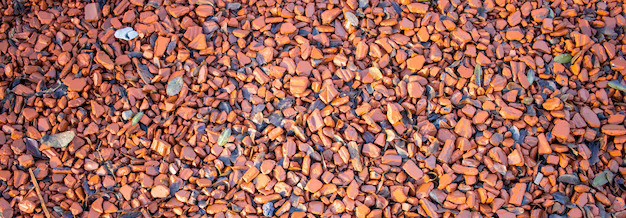
What is Brick Shrads?
Brick shards provide stability and aeration. However, they may require additional nutrient supplementation due to their low nutrient-holding capacity.
Benefits of Brick Shards:
- Inexpensive
- Easy to clean
- Drains well
Downsides of Brick Shards:
- May affect pH
- Requires more thorough cleaning
- Heavy
- Plant roots may dry out
13. Polystyrene Packing Peanuts
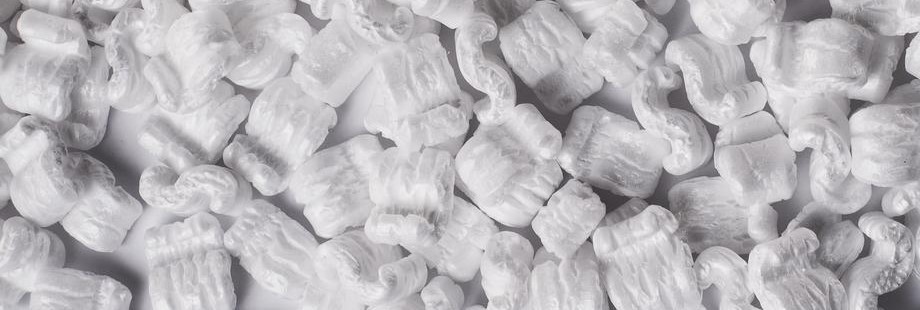
What is Polystyrene packing peanuts?
Polystyrene packing peanuts are lightweight, insulating, and affordable. However, they are not suitable for long-term use due to degradation over time.
Benefits of Packing Peanuts:
- Cheap (often free)
- Very lightweight
- Drain well
Downsides of Packing Peanuts:
- Only polystyrene will work – biodegradable packing peanuts will turn to slush
- Potential for plants to absorb styrene
Factors to Consider When Choosing a Growing Medium
When selecting a hydroponic growing medium, several factors should be considered:
- Water Retention: Different plant types have varying moisture requirements. Choose a medium that matches the water needs of your plants.
- Aeration: Healthy root development relies on oxygenation. Ensure the medium allows sufficient airflow to promote optimal root growth.
- Nutrient Retention: The growing medium should effectively hold and deliver nutrients to the plants, ensuring their proper growth and development.
- pH Stability: Consider how the medium will affect the pH balance of the nutrient solution.
How to Choose the Perfect Growing Medium?
To select the most suitable growing medium for your hydroponic system, consider the following:
- Research and Experimentation: Conduct thorough research and experiment with different growing media to find the best fit for your plants and system.
- Consider Plant Types: Different plants have specific preferences for growing media. Take into account their requirements and select accordingly.
- System Size: The size and scale of your hydroponic system can influence the choice of growing medium. Consider the logistics and practicality of each option.
- Personal Preference: Personal experience and preference also play a role in choosing a growing medium. Consider what has worked well for you in the past.
Maintaining and Reusing Growing Media
To ensure the longevity and effectiveness of your hydroponic growing media, follow these tips:
- Cleaning and Sterilization: Clean and sterilize the growing medium between crops to prevent the buildup of pathogens and diseases.
- Nutrient Flushing: Flush the medium with water to remove residual nutrients and salts that may accumulate over time.
- Reconditioning and pH Adjustment: Recondition the growing medium by replenishing nutrients and adjusting the pH level before reusing it.
- Replacement Considerations: Assess the condition of the growing medium periodically. If it becomes compacted, degraded, or loses its effectiveness, it may be necessary to replace it.
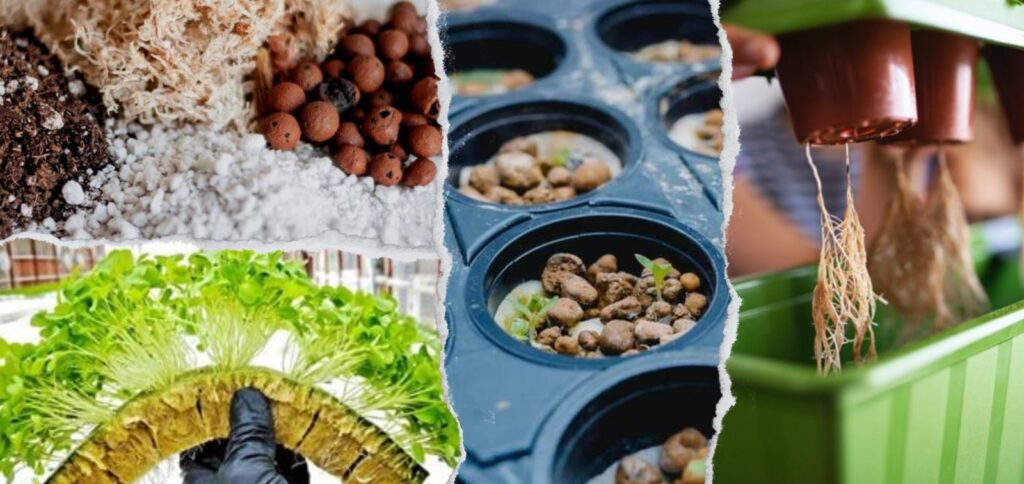
Conclusion
Choosing the right growing medium for your hydroponic system is a critical decision that impacts the health and productivity of your plants. Consider your specific needs, plant requirements, and system characteristics when making this choice. With the wide variety of hydroponic growing media available, you can find the perfect fit for your setup. Remember to maintain and reuse your growing media properly to maximize their lifespan and optimize your hydroponic gardening experience. Embark on your hydroponic journey with confidence, knowing that you have selected the most suitable growing medium for your needs.
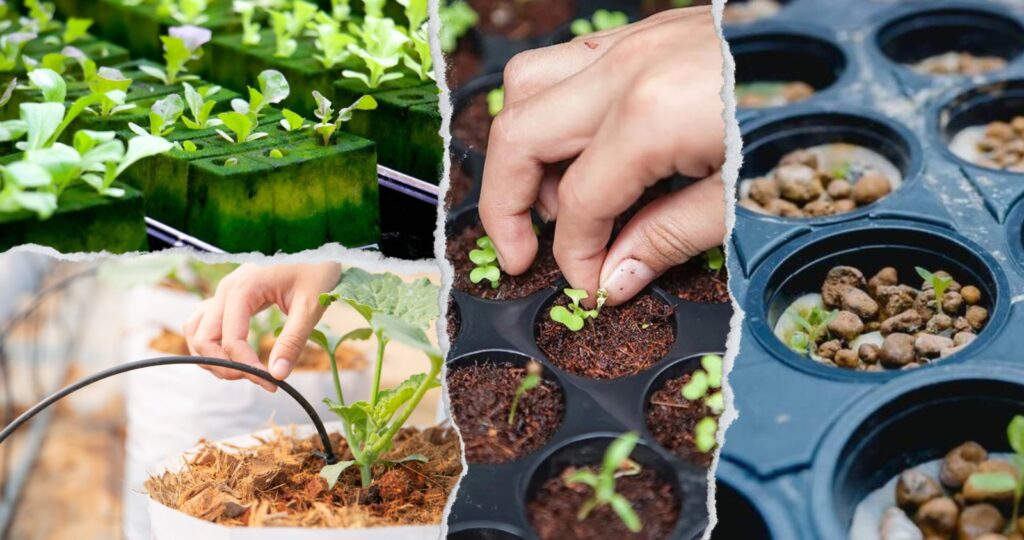
FAQ (Frequently Asked Questions)
1. What is the importance of selecting the right growing medium for a hydroponic system?
The growing medium plays a crucial role in supporting plant roots, providing stability, and maintaining a proper water-to-oxygen ratio. It also affects the nutrient delivery to plants. Choosing the right growing medium ensures healthy root development, optimal nutrient absorption, and overall plant growth in a hydroponic system.
2. How do I determine which growing medium is best for my hydroponic setup?
When selecting a growing medium, consider factors such as water retention, aeration, nutrient retention, pH stability, cost, availability, and sustainability. Additionally, research plant-specific preferences and experiment with different mediums to find the one that works best for your hydroponic system and the specific plants you are growing.
3. Can I reuse hydroponic growing media?
Yes, hydroponic growing media can be reused. However, proper maintenance and care are essential. Clean and sterilize the medium between crops to prevent the buildup of pathogens. Flushing the medium with water helps remove residual nutrients. Recondition the medium by replenishing nutrients and adjusting the pH level before reusing it. Periodically assess the condition of the medium, as it may need replacement if it becomes compacted, degraded, or loses its effectiveness.
4. Are there any environmentally friendly options for hydroponic growing media?
Yes, several hydroponic growing media options are sustainable and environmentally friendly. Coco coir, rice hulls, vermiculite, wood fiber, growstones, and pumice are some examples. These materials can be sourced sustainably, reduce waste, and have minimal environmental impact.
5. Can different plants require different growing media?
Yes, different plants have varying preferences for growing media. Some plants may thrive in a medium with high water retention, while others prefer excellent drainage and aeration. Research the specific requirements of the plants you intend to grow and choose a growing medium that aligns with those needs.
6. Do I need to adjust the pH of the growing medium?
The pH of the growing medium is crucial as it affects nutrient availability. Depending on the medium and the pH requirements of your plants, you may need to adjust the pH. Monitor and maintain the proper pH range for your specific plants to ensure optimal nutrient uptake and growth.
7. How often should I replace my hydroponic growing medium?
The frequency of replacing the growing medium depends on its condition. If the medium becomes compacted, degraded, or loses its effectiveness in terms of water retention, aeration, or nutrient delivery, it may be time for a replacement. Regularly assess the condition of the medium to determine if it needs to be replaced.
8. Can I mix different types of growing media in my hydroponic system?
Yes, it is possible to mix different types of growing media in a hydroponic system. This approach allows you to combine the benefits of each medium and create an optimal environment for plant growth. However, it is important to consider compatibility, water distribution, and root development when mixing different media.
9. Can I reuse polystyrene packing peanuts as a growing medium?
Polystyrene packing peanuts are not suitable for long-term use as a growing medium. They degrade over time and can release harmful substances into the system. It is recommended to choose more sustainable and stable options for your hydroponic growing media.
10. Can I use soil as a growing medium in hydroponics?
Hydroponics is a soil-less cultivation method, so using soil as a growing medium is not recommended. Soil can clog the hydroponic system, disrupt nutrient delivery, and hinder proper root aeration. It is best to choose hydroponic-specific growing media that provide the necessary support, moisture retention, and aeration for optimal plant growth.
